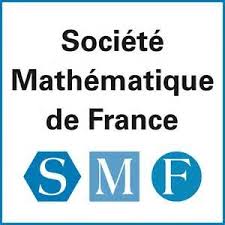Soient
Let
Mot clés : groupes réductifs finis, groupes algébriques non connexes
Keywords: finite reductive groups, disconnected algebraic groups
@article{BSMF_2004__132_2_157_0,
author = {Sorlin, Karine},
title = {\'El\'ements r\'eguliers et repr\'esentations {de~Gelfand-Graev} des~groupes r\'eductifs non connexes},
journal = {Bulletin de la Soci\'et\'e Math\'ematique de France},
pages = {157--199},
publisher = {Soci\'et\'e math\'ematique de France},
volume = {132},
number = {2},
year = {2004},
doi = {10.24033/bsmf.2463},
mrnumber = {2075565},
zbl = {1059.20017},
language = {fr},
url = {http://www.numdam.org/articles/10.24033/bsmf.2463/}
}
TY - JOUR AU - Sorlin, Karine TI - Éléments réguliers et représentations de Gelfand-Graev des groupes réductifs non connexes JO - Bulletin de la Société Mathématique de France PY - 2004 SP - 157 EP - 199 VL - 132 IS - 2 PB - Société mathématique de France UR - http://www.numdam.org/articles/10.24033/bsmf.2463/ DO - 10.24033/bsmf.2463 LA - fr ID - BSMF_2004__132_2_157_0 ER -
%0 Journal Article %A Sorlin, Karine %T Éléments réguliers et représentations de Gelfand-Graev des groupes réductifs non connexes %J Bulletin de la Société Mathématique de France %D 2004 %P 157-199 %V 132 %N 2 %I Société mathématique de France %U http://www.numdam.org/articles/10.24033/bsmf.2463/ %R 10.24033/bsmf.2463 %G fr %F BSMF_2004__132_2_157_0
Sorlin, Karine. Éléments réguliers et représentations de Gelfand-Graev des groupes réductifs non connexes. Bulletin de la Société Mathématique de France, Tome 132 (2004) no. 2, pp. 157-199. doi : 10.24033/bsmf.2463. http://www.numdam.org/articles/10.24033/bsmf.2463/
[1] - Finite groups of Lie type, Wiley-Interscience, 1985. | MR | Zbl
[2] , & - « The characters of the group of rational points of a reductive group with non-connected centre », J. reine angew. Math. 425 (1992), p. 155-192. | MR | Zbl
[3] & - Representations of Finite Groups of Lie Type, London Math. Soc. Student Texts, vol. 21, Cambridge University Press, Cambridge, 1991. | MR | Zbl
[4] -, « Groupes réductifs non connexes », Ann. Sci. École Normale Sup. 27 (1994), p. 345-406. | Numdam | MR | Zbl
[5] -, « Points fixes des automorphismes quasi-semi-simples », C.R. Acad. Sci. Paris, Sér. I 334 (2002), p. 1055-1060. | MR | Zbl
[6] - « Generalized Deligne-Lusztig characters », J. Alg. 159 (1993), no. 1, p. 64-97. | MR | Zbl
[7] - Classes unipotentes et sous-groupes de Borel, Lectures Notes in Math., vol. 946, Springer, 1982. | MR | Zbl
[8] - Endomorphisms of linear algebraic groups, Mem. Amer. Math. Soc., vol. 80, American Mathematical Society, Providence, RI, 1968. | MR | Zbl
Cité par Sources :










